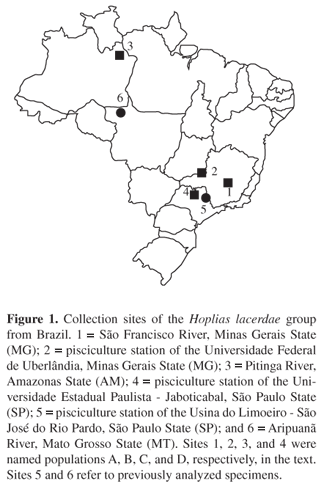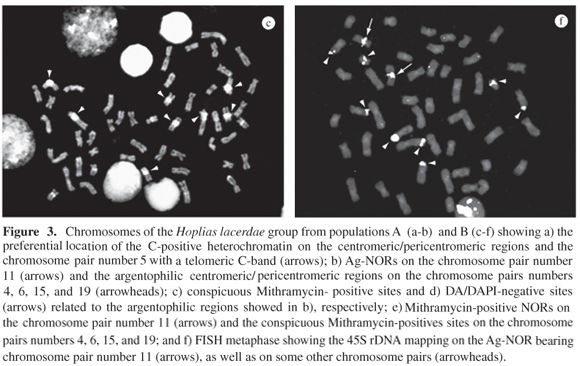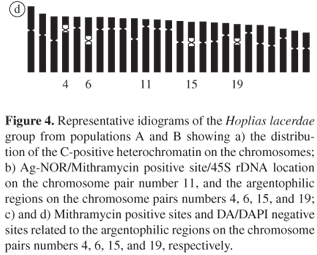The taxonomy/systematics of the Erythrinidae fish is still imprecise, with several doubts on their relationships. Karyotypes and chromosomal characteristics of some species of the Hoplias lacerdae group (Erythrinidae), from different Brazilian hydrographic basins and pisciculture stations, were analyzed in the present study, using conventional Giemsa staining, C-banding, silver staining, Mithramycin and Distamycin/DAPI fluorochromes, and fluorescent in situ hybridization (FISH). A diploid chromosome number of 2n = 50 and karyotypes composed of meta- and submetacentric chromosomes without sex-related differences were found. Only one active NOR (Nucleolar Organizer Region) site was found, which was identified by silver staining (Ag-NOR) and FISH, located on the chromosome pair 11, although additional 45S rDNA sites were also mapped on other chromosome pairs only by FISH. The Ag-NOR of the chromosome pair 11 was found to be GC-rich, appearing positive after Mithramycin staining. Mithramycin-positive/DAPI-negative sites were also observed in the centromeric/pericentomeric regions of the chromosome pairs 4, 6, 15, and 19, which have also affinity to silver nitrate. However, these four sites were not detected by FISH with the rDNA probe, indicating to be only argentophilic GC-rich heterochromatic regions. Chromosome data show that the karyotype evolution in Hoplias lacerdae group is relatively conserved and follows a particular pathway concerning the other Erythrinidae fishes, such as Hoplias malabaricus, Hoplerythrinus unitaeniatus, and Erythrinus erythrinus, in which polytypic karyotypes are found. Thus, the H. lacerdae group shows chromosome features that are not closely related to those of the congeneric H. malabaricus group. These finds, together with genetic and morphologic data, are important tools to be considered in a major revision of the Erythrinidae family, as well as for conservation programs.
erythrinid; chromosome features; karyotypic evolution; cytotaxonomy










